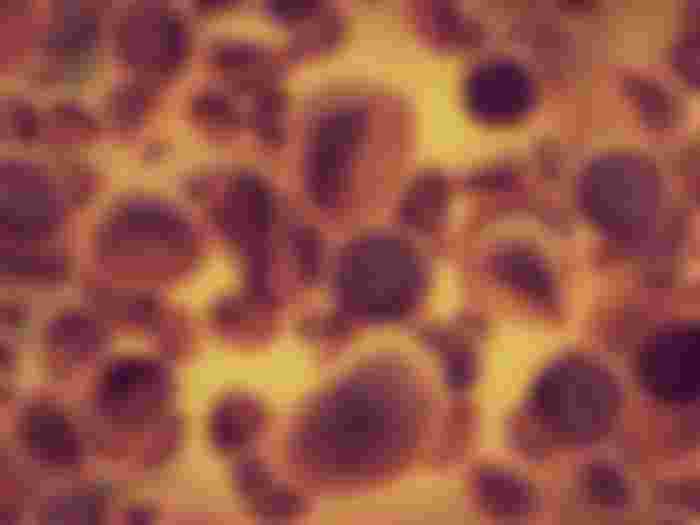leukemia is a type of cancer that can affect the blood and the cells that make up the blood. Thus, it is commonly called "blood cancer". The name of this condition is derived from the Greek words leukos (clear or white) and haima (blood).

Blood cancer results from the production of bone marrow by abnormal types of white blood cells. Healthy white blood cells help fight infection. When abnormal white blood cells multiply in the blood, they can overwhelm healthy blood cells. As a result, it becomes very difficult for the blood to fight infections and other types of conditions.
No specific cause has yet been identified as the cause of leukemia, but genetics and environmental factors can be considered as causes.
Some of the signs of leukemia include fever, lethargy, bleeding, weight loss, and excessive infection.
Today, leukemia is treated through surgery, chemotherapy, radiation, and even a stem cell transplant.
History
Surgeon and anatomist Alrfed-Armand-Louis-Marie Velpeau was one of the first to discuss leukemia in 1827. And a broader description of this disease was made by Rudolf Virchow, a pathologist, in 1845 .
About ten years later, pathologist Franz Ernst Christian Neumann discovered that the bone marrow of a person who died of leukemia was greenish yellow instead of red as in healthy bone marrow. Here Neumann found that bone marrow problems were the cause of leukemia.
Since 1900 there have been various studies on the possible cure for this disease. It was not until 1962 that researchers Emil J. Freireich, Jr. discovered And Emil Frei III that chemotherapy helps to fight leukemia.
Types

Image Source: merckmanuals.com
Leukemia or blood cancer comes in different forms, including the following:
Acute myeloid leukemia (AML). It is also called acute myeloblastic leukemia, acute granulocytic leukemia, acute myelogenous leukemia or acute nonlymphocytic leukemia. It is a type of condition in which blood and bone marrow cancer grows rapidly.
Acute lymphocytic leukemia (ALL). This type of leukemia develops rapidly. It replaces healthy cells. Its cells are carried away and spread to different parts of the body through blood vessels. It affects the liver, brain, testicles, and even the lymph nodes. Because many parts of the body are affected by it, many can be its symptoms.
Chronic myeloid leukemia (CML). This type of leukemia begins with the cells that make up the blood in the bone marrow. Over time it spreads to the blood as well as to other parts of the body.
Chronic lymphocytic leukemia (CLL). This type of leukemia is slow to spread. It starts with lymphocytes in the bone marrow and spreads to the blood. It can also spread to other parts of the body, including the spleen, liver, and swelling. This condition occurs when there are more abnormal blood cells than healthy cells. This causes the inability of the blood to fight infections.
Hairy cell leukemia. It is a type of unusual chronic lymphocytic leukemia that is slow to spread. A person develops this when the amount of B cells produced in bone marrow exceeds. As a result, very few healthy white blood cells, red blood cells, and platelets are produced.
Causes
There is no definite cause for leukemia. The only thing known about it is the presence of an excessive number of abnormal blood cells created by bone marrow. When left unmanaged, they can be left astray and lose the right path. As a result, healthy cells lose the ability to properly fight infections.
It is not clear why there are so many abnormal cells created in bone marrow. However, there are theories that suggest that genetics and certain environmental factors can cause leukemia. Thus, people with parents who have had leukemia may also have it.
People exposed to radiation can also develop leukemia. In fact, it has been observed in some tests that some people who received chemotherapy or radiation therapy for other types of cancer developed leukemia.
Symptoms

Image Source: today.com
Because of the different types of leukemia, there are also many symptoms. However, the common symptoms of this type of disease are as follows:
Having a fever with chills
Frequent infections
Frequent lethargy
Inflammation of the spleen, liver, and spleen
It is easy to have bruises and unexplained bleeding
Recurrent nasal bleeding
Unexplained weight loss
Having a red rash on the skin
Excessive sweating even at night
Pain in the bones
Like other types of disease, leukemia may not affect all people. There are definitely people at high risk of having this decision.
Risk Factors
The following are risk factors for developing leukemia:
Sex. It has been proven that men are more likely to have leukemia than women.
Age. Those 65 years of age and older are the most common who may have acute myeloid leukemia (AML), chronic lymphocytic leukemia (CLL), or chronic myeloid leukemia (CML). Acute lymphocytic leukemia (ALL) can usually affect those under 20 years of age.
Having it in the family. Not all leukemia can be inherited. Only a few of these types can be passed on through genes, such as chronic lymphocytic leukemia, acute myeloid leukemia, and even acute lymphocytic leukemia.
Having a blood condition. There are various blood conditions, such as polycythemia vera, idiopathic myelofibrosis, and essential thrombocytopenia that increase a person's chances of developing acute myeloid leukemia.
Undergoing cancer treatment. People who have cancer and have been or are currently undergoing treatment may have leukemia.
Exposure to radiation and electromagnetic fields. People exposed to radiation and electromagnetic fields can develop leukemia. Thus, people living near communication towers and power cords may have this condition.
Exposure to chemicals. People who experience excessive exposure to industrial chemicals and pesticides can also develop leukemia.
Smoking. Smoking does not directly cause leukemia. However, it increases the risk of developing acute myeloid leukemia.
To avoid;
There are types of leukemia that can be avoided. The main way to prevent this disease is to change your lifestyle.
Avoiding certain types of food
According to some studies, Western food type can cause leukemia. It is the choice of foods rich in high-fat dairy products, processed meats, refined grains, sweet foods, high-calorie drinks, even instant foods. Avoiding them can also help prevent the risk of developing leukemia.
Avoid artificial sweetener
Artificial sweeteners, such as sucralose, have been found to cause leukemia. However, the study done here is on animals. However, consumption of sucralose has been found to kill good intestinal bacteria. When they are severely reduced in the stomach, the body may become open to lymphoma.
Having enough exercise
Numerous studies have shown that regular exercise can do much to prevent the development of tumors in the body. And modern studies have found that regular and regular exercise also helps reduce the risk of developing leukemia.


